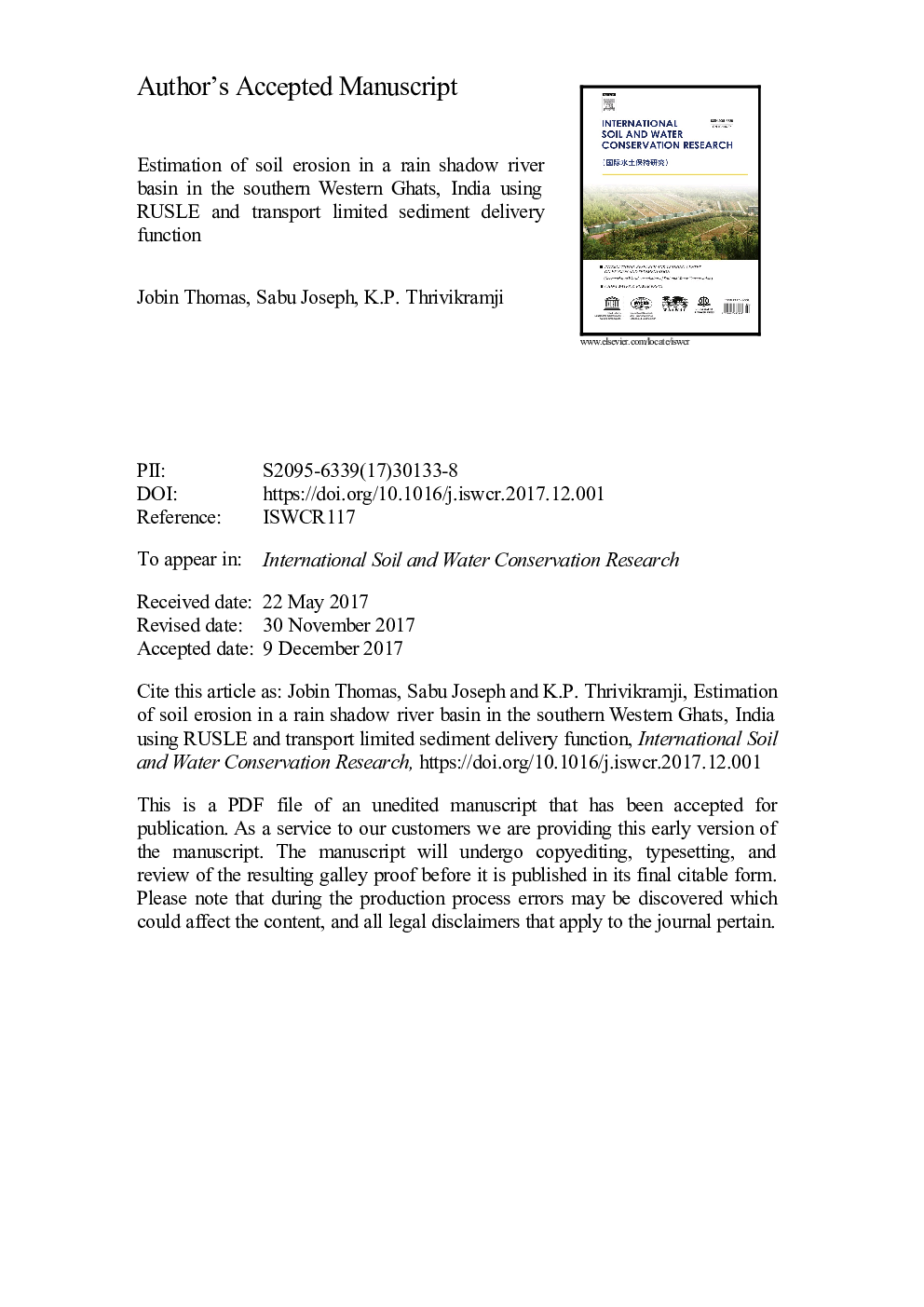| Article ID | Journal | Published Year | Pages | File Type |
|---|---|---|---|---|
| 8865103 | International Soil and Water Conservation Research | 2018 | 33 Pages |
Abstract
Soil erosion and deposition in a tropical mountainous river basin, viz., Pambar River Basin (PRB), in a rain shadow region of the southern Western Ghats (India) were modelled using Revised Universal Soil Loss Equation (RUSLE) and transport limited sediment delivery (TLSD) function in GIS. Mean gross soil erosion in the basin is 11.70â¯tâ¯haâ1 yrâ1, and is comparable with the results of previous soil erosion studies from the region. However, mean net soil erosion from the basin is 2.92â¯tâ¯haâ1 yrâ1 only, which is roughly 25% of the gross soil erosion. Although natural vegetation belts show relatively higher gross- and net-soil erosion rates (mainly due to high LS and C factors), their sediment transport efficiency is remarkably less, compared to the land use/ land cover types with anthropogenic signatures (i.e., plantations and croplands). Despite the lesser amount of annual rainfall, the high rates of soil loss from the semi-arid areas of the basin might be the result of the poor protective vegetation cover as well as isolated high intensity rainfall events. The study highlights the significance of climate-specific plans for soil erosion management and conservation of the soil resources of the basins developed in rain shadow regions.
Keywords
Related Topics
Physical Sciences and Engineering
Earth and Planetary Sciences
Earth-Surface Processes
Authors
Jobin Thomas, Sabu Joseph, K.P. Thrivikramji,
